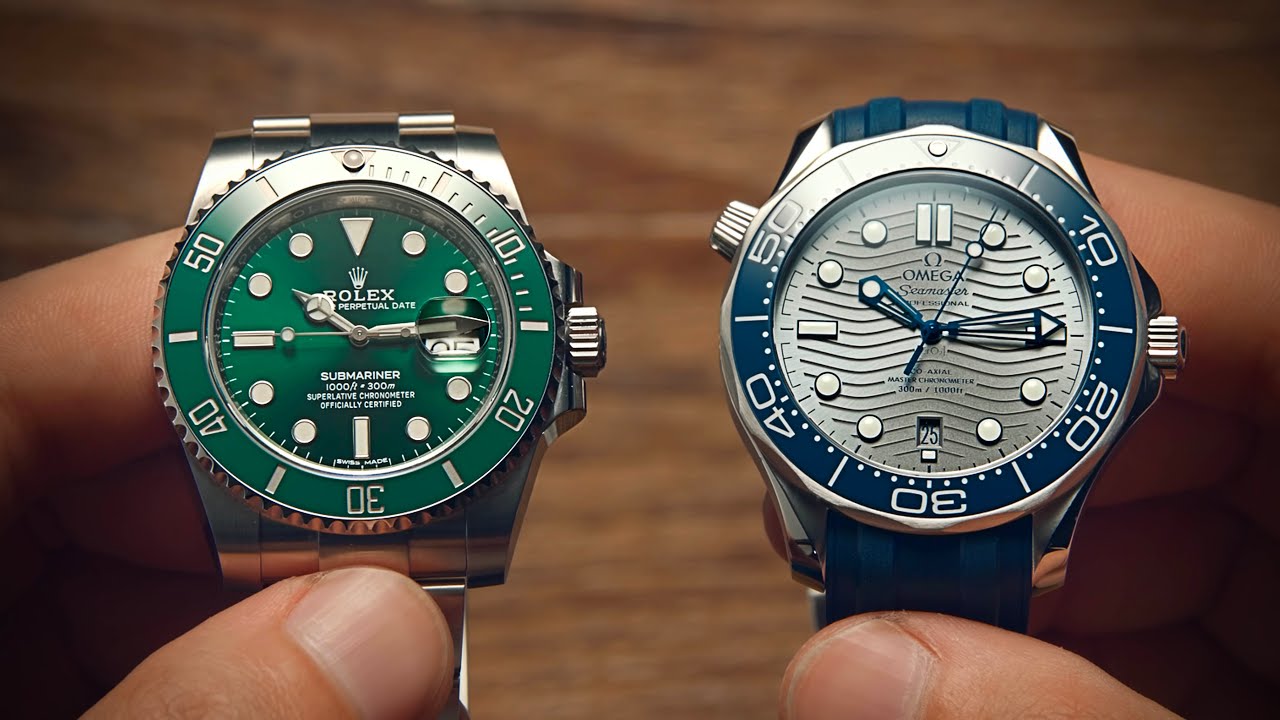In the vast world of horology, few rivalries have sparked as much debate as the legendary face-off between the Rolex Submariner and the Omega Seamaster. These two titans have defined the dive watch category for decades, setting benchmarks in durability, style, innovation, and prestige. Whether you’re a seasoned collector or just entering the watch world, chances are you’ve considered one of these iconic timepieces. But what exactly makes them so revered—and how do they stack up against each other?
Heritage and History
The Rolex Submariner debuted in 1953, quickly becoming the archetype for all dive watches. Worn by James Bond (early Sean Connery era), the Submariner was the first watch waterproof to 100 meters, with a timeless design that hasn’t strayed far from its original DNA.
In contrast, the Omega Seamaster boasts a longer lineage, originally introduced in 1948 as a water-resistant dress watch. It evolved into a true dive watch in 1957 with the Seamaster 300 and gained widespread fame through its modern Bond affiliation—particularly with Pierce Brosnan and Daniel Craig.
Design and Aesthetics
The Submariner is all about understated luxury—a minimalist dial, robust Oyster bracelet, and the iconic Cerachrom ceramic bezel. Its clean design makes it a versatile companion, from deep-sea dives to black-tie events.
On the flip side, the Seamaster (especially the Diver 300M) is more tech-forward in appearance, with a laser-engraved wave dial, skeletonized hands, helium escape valve, and bold indexes. It leans into its oceanic inspiration with a modern edge.
Movement and Performance
Today’s Rolex Submariner runs on the in-house Caliber 3235 or 3230—offering a 70-hour power reserve, improved accuracy, and resistance to magnetism.
Omega’s Seamaster uses the Co-Axial Master Chronometer movements, such as the Caliber 8800 or 8900, which are METAS certified for industry-leading magnetic resistance and accuracy. While both brands are exceptional, Omega pushes slightly further in technical innovation—though Rolex wins on brand prestige and resale value.
Depth Ratings and Durability
-
Rolex Submariner: 300 meters (1000 ft)
-
Omega Seamaster Diver 300M: Also 300 meters (1000 ft)
Both are ISO-compliant dive watches, built to withstand extreme conditions. However, Omega’s helium escape valve gives it an edge for saturation diving, though most wearers will never need it.
Price and Value
-
Submariner Retail: Around $9,100+ (often sells for more on the secondary market)
-
Seamaster Retail: Around $5,600+
Rolex commands a premium due to demand, scarcity, and brand cachet. Omega offers more accessible pricing and similar (if not superior) specs, making it one of the best value propositions in the luxury dive watch category.
The Verdict: Kings in Their Own Right
The Rolex Submariner is the ultimate status symbol—steeped in legacy and built like a tank. It’s for those who want timeless luxury with bulletproof engineering.
The Omega Seamaster is a bold, feature-rich dive watch that punches well above its price, appealing to those who appreciate technology, history, and a bit of daring design.
There’s no wrong choice—only personal preference. Whether you’re team Rolex or team Omega, one thing is clear: these watches will forever reign as the kings of the deep.


